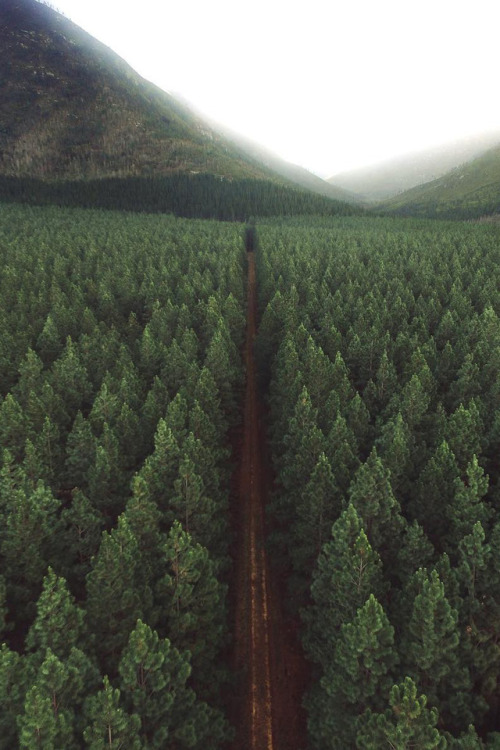Fascinating Demonstration.
Fascinating demonstration.
This video demonstrates one of my favorite effects: the reversibility of laminar flow. Intuition tells us that un-mixing two fluids is impossible, and, under most circumstances, that is true. But for very low Reynolds numbers, viscosity dominates the flow, and fluid particles will move due to only two effects: molecular diffusion and momentum diffusion. Molecular diffusion is an entirely random process, but it is also very slow. Momentum diffusion is the motion caused by the spinning inner cylinder dragging fluid with it. That motion, unlike most fluid motion, is exactly reversible, meaning that spinning the cylinder in reverse returns the dye to its original location (plus or minus the fuzziness caused by molecular diffusion).
Aside from being a neat demo, this illustrates one of the challenges faced by microscopic swimmers. In order to move through a viscous fluid, they must swim asymmetrically because exactly reversing their stroke will only move the fluid around them back to is original position. (Video credit: Univ. of New Mexico Physic and Astronomy)
More Posts from Coolbrzblu and Others
Beautiful S Africa..

Eastern Cape, South Africa by Jacques Crafford

Awesome






Record-Breaking Galaxy Cluster Confirms Dark Matter Universe
“But this new cluster is just 2.6 billion years old, and seems to be undergoing the very transition where a collection of galaxies falls into a bound structure for the first time, from a protocluster to a true galaxy cluster. This marks the first time astronomers have ever detected such an event: of the exact moment that a protocluster transitions to a true cluster. The fact that so many total galaxies (seventeen!) were discovered localized together at the same redshift (z=2.506) was a big hint, but the final piece of evidence came from the X-rays, where the diffuse emission engulfing the entire set of objects shows, beyond a shadow of a doubt, that this really is a galaxy cluster!”
There was once a time early on in the Universe where there were no stars, no galaxies and no clusters of galaxies at all. While stars and galaxies form very early on, after only tens or hundreds of millions of years, it takes billions of years for the first clusters to form. Yet even if we were to look back into the Universe’s past up to ten billion years, the clusters we see are already well-evolved and quiet. We had never seen a set of galaxies fall in and actively form a cluster before. We’d never seen the protocluster/cluster transition before. And we’d never found one from when the Universe was between two and three billion years old: when our dark matter theory predicts the first great clusters ought to form. Until, that is, now.
Come see how the Chandra X-ray observatory just found a record-breaking cluster that confirms our greatest picture of the Universe’s history!
Good memories.

what does your mixtape sound like?
Awesome shot!

STORM (USA) by Sergey Bidun || Website || Facebook
Awesome chest..

Wow..

Checkout all my new pics here and my Tumblr blog here.


-
 eintheology liked this · 8 months ago
eintheology liked this · 8 months ago -
 sylvamea liked this · 11 months ago
sylvamea liked this · 11 months ago -
 land-of-n0d liked this · 4 years ago
land-of-n0d liked this · 4 years ago -
 inertescapist liked this · 6 years ago
inertescapist liked this · 6 years ago -
 timtrul-blog liked this · 8 years ago
timtrul-blog liked this · 8 years ago -
 phycfel reblogged this · 8 years ago
phycfel reblogged this · 8 years ago -
 jewelofsecrets-blog liked this · 8 years ago
jewelofsecrets-blog liked this · 8 years ago -
 amiramademedoit reblogged this · 8 years ago
amiramademedoit reblogged this · 8 years ago -
 mantaabyssus reblogged this · 8 years ago
mantaabyssus reblogged this · 8 years ago -
 silwer999 liked this · 8 years ago
silwer999 liked this · 8 years ago -
 smimon reblogged this · 8 years ago
smimon reblogged this · 8 years ago -
 resolux-blog liked this · 8 years ago
resolux-blog liked this · 8 years ago -
 strangehideoutgladiator liked this · 8 years ago
strangehideoutgladiator liked this · 8 years ago -
 autumntides reblogged this · 8 years ago
autumntides reblogged this · 8 years ago -
 cheese-dolphins reblogged this · 8 years ago
cheese-dolphins reblogged this · 8 years ago -
 mantaabyssus liked this · 8 years ago
mantaabyssus liked this · 8 years ago -
 cptnjaneway liked this · 8 years ago
cptnjaneway liked this · 8 years ago -
 twoteaspoons liked this · 8 years ago
twoteaspoons liked this · 8 years ago -
 smimon liked this · 8 years ago
smimon liked this · 8 years ago -
 everspace liked this · 8 years ago
everspace liked this · 8 years ago -
 nimblermortal reblogged this · 8 years ago
nimblermortal reblogged this · 8 years ago -
 hushpuppystudies reblogged this · 8 years ago
hushpuppystudies reblogged this · 8 years ago -
 landofflashandfilm liked this · 8 years ago
landofflashandfilm liked this · 8 years ago -
 tuibelle liked this · 8 years ago
tuibelle liked this · 8 years ago -
 20thcenturyvole reblogged this · 8 years ago
20thcenturyvole reblogged this · 8 years ago -
 bulletproofsilence liked this · 8 years ago
bulletproofsilence liked this · 8 years ago -
 little-lambchop reblogged this · 8 years ago
little-lambchop reblogged this · 8 years ago -
 riana-one liked this · 8 years ago
riana-one liked this · 8 years ago -
 girlprince-possum liked this · 8 years ago
girlprince-possum liked this · 8 years ago -
 eudai-monia liked this · 8 years ago
eudai-monia liked this · 8 years ago -
 c1qfxugcgy0 reblogged this · 8 years ago
c1qfxugcgy0 reblogged this · 8 years ago -
 kindaoffkilter reblogged this · 8 years ago
kindaoffkilter reblogged this · 8 years ago -
 knitmeapony reblogged this · 8 years ago
knitmeapony reblogged this · 8 years ago -
 knitmeapony liked this · 8 years ago
knitmeapony liked this · 8 years ago -
 cctinsleybaxter liked this · 8 years ago
cctinsleybaxter liked this · 8 years ago -
 songofsunset reblogged this · 8 years ago
songofsunset reblogged this · 8 years ago -
 gerrykeay reblogged this · 8 years ago
gerrykeay reblogged this · 8 years ago










